Elevating the performance of oilfield equipment to the level at which the automotive industry operates requires decreasing current failure rates by 96%. This can be done only by taking a completely new approach to product development planning and design as well as to job execution.
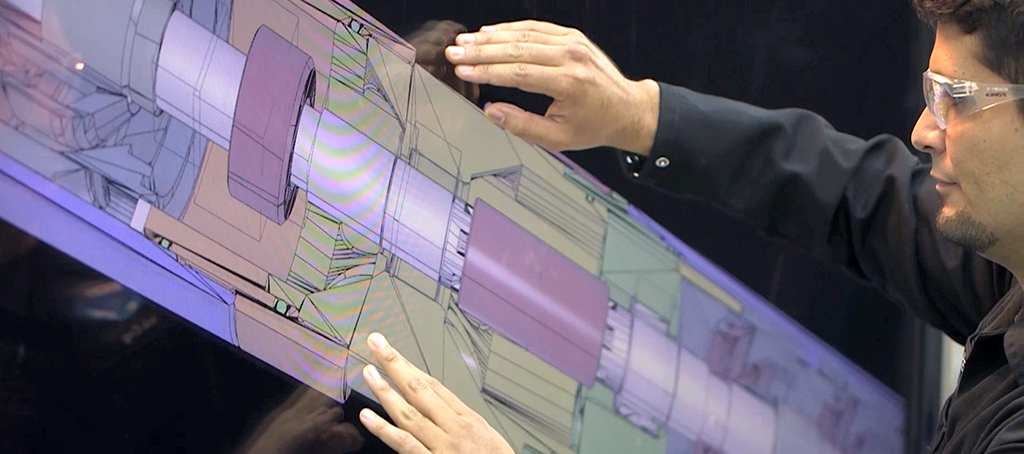
The Schlumberger R&E transformation restructured both the organization and processes across our more than 65 engineering, manufacturing, and sustaining centers worldwide. Our way of working has been changed, from engineering to shop floor and from supply chain to technical support. As a result, a clear, unified methodology and language have been established, enhancing our ability to form collaborative teams across multiple centers and to optimize manufacturing locations independently of engineering location. To this end, training courses developed in collaboration with the California Institute of Technology and University of Michigan on project management and lean manufacturing, respectively, have been attended by more than 600 engineering project managers and manufacturing professionals. An additional 5,000 engineers were also trained on the new methodologies to firmly establish the transformation throughout the R&E organization. Since the start of the transformation more than $350 million have been invested in organizational structure, global training, and test facilities.
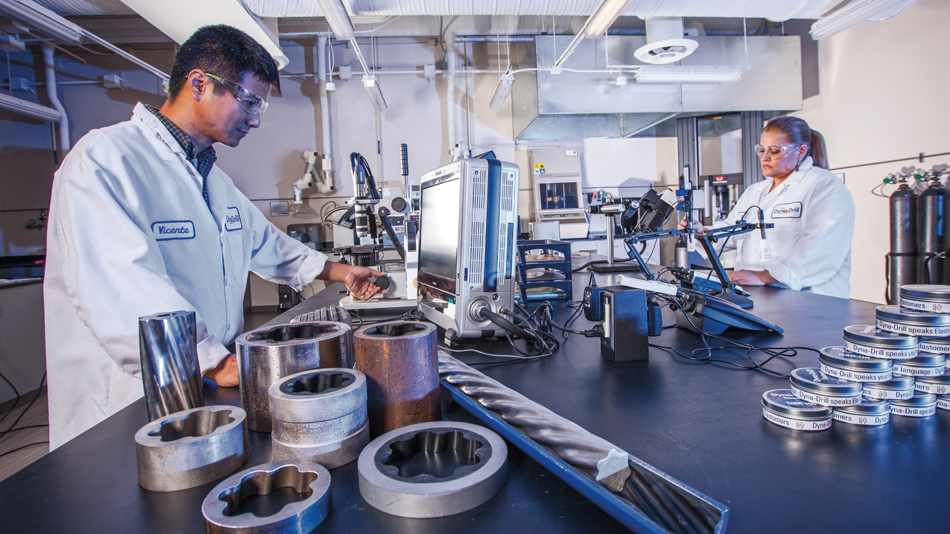
New approaches in Schlumberger product development, job planning and design, and job execution have increased product reliability.
One of the principal notions underlying the new process is concurrent design in which design engineers, software developers, and scientists work together from the start of the project with specialists in reliability, manufacturability, and supply-chain aspects. This concurrent teamwork ensures that once the new product is introduced, not only does it meet its functionality and performance specifications, but it is also manufactured from the outset at optimal cost and can be deployed worldwide with excellent reliability.
Modeling and simulation also play key roles in driving R&E performance. Their extensive use includes rapid testing and optimized design to explore options and parameter combinations before a prototype needs to be built. One of the first tools developed with the new process was the Wireline Saturn* 3D radial probe. Comprehensive modeling conducted for this new fluid sampling service contributed to its remarkable out-of-the-box performance and one of the most rapid market deployments of any Schlumberger product.
Once a prototype product has been built, it undergoes extensive testing before being released for commercial service. As part of the R&E transformation, we made a considerable investment in state-of-the-art test equipment and processes. Some installations accelerate subassembly testing while others reproduce an oilfield operating environment to rigorously test complete systems. More than $120 million has been invested to upgrade and expand these in-house capabilities.
New product development is also accelerated by emphasizing the use of common building blocks across our product lines. Within the R&E organization, the enabling technologies group develops and standardizes fundamental enabling-technology platforms across the company. One example is a library of standard microelectronic building blocks that are capable of withstanding temperatures in excess of 400 deg F. These blocks are employed across product lines, from Drilling & Measurement to Wireline and from Testing Services to Completions.
Just as product reliability begins with good product design, process reliability begins with good process design. By learning from other industries, we have also transformed our approach to the critical processes that have the greatest impact on reliability. One example is the fresh look we have taken at standard work instructions and operational checklists.
The upgraded standard work instructions are embedded in process management applications. This enables rigorously monitoring process steps for proper completion and optimal efficiency. User feedback and suggestions are captured in real time, and the data are consolidated to identify bottlenecks or reliability concerns that can be addressed. Changes can be immediately deployed and made rapidly accessible to every user using a variety of intranet applications.
Operational reliability is furthered by new technologies. Our close collaboration with academic institutions and technology partners also optimizes process workflows for implementing leading-edge technology as well as for learning systems and simulation. The partnership we have established around the applications of augmented reality platforms is a good example, illustrating how our field organization will function in the future. Equipment maintenance also benefits from many aspects of improved process design. We have similarly implemented best practices from other industries, including changing maintenance from a fixed schedule to a condition-based approach using sensors in the equipment as well as data related to the operating environment. More than two years of testing this approach has delivered excellent results. For example, the Wireline MDT* modular formation dynamics tester has more than doubled its reliability over the past three years.
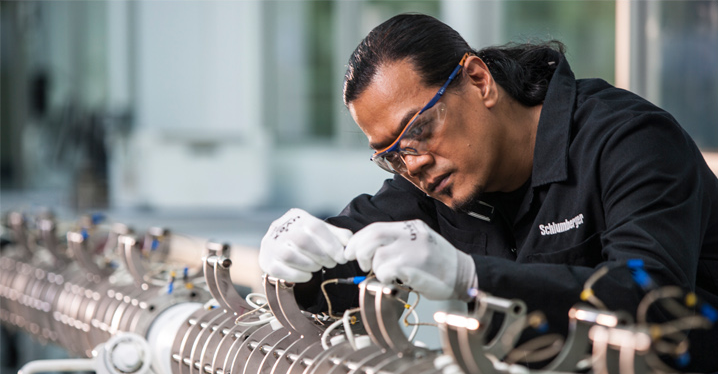
Schlumberger possesses a unique strength in the scale and footprint of its global operations. Each month, our product lines conduct a total of more than one million operating hours, representing a massive reach in serving customer needs as well as in identifying market opportunities. Our resource base includes 300,000 mobile assets and 2,500 operating facilities, and we manage more than 80,000 suppliers. However, to leverage scale, not only must you have it, you have to know how to use it. The transformation of R&E and the development of initiatives in operational reliability are prerequisite in improving performance and increasing efficiency.
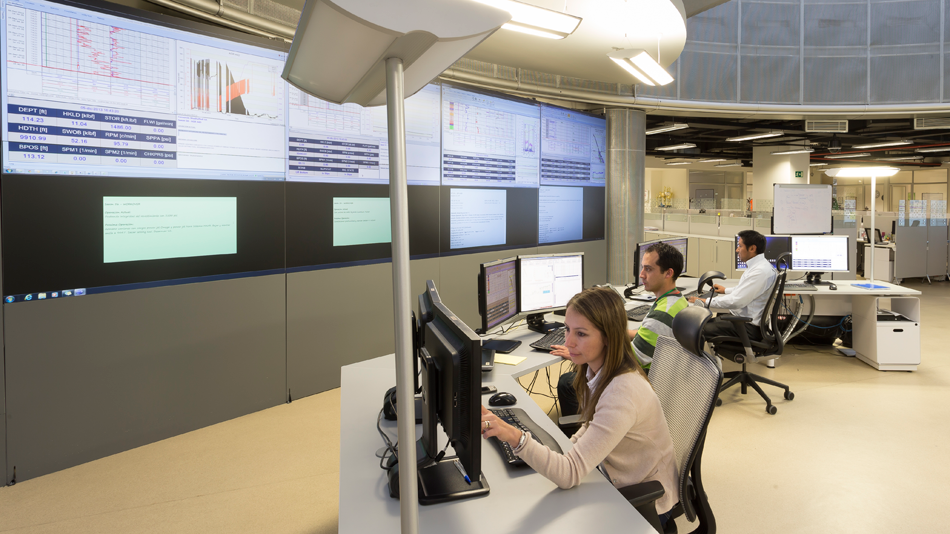
Centralization has made a big change in capex and efficiency in the Wireline Center for Reliability and Efficiency in Port Klang, Malaysia.
While systems and technology provide the foundation for reliability and efficiency, it is the behavior and actions of people that really make a difference. Schlumberger is already an industry leader in procedural adherence. This is embedded in every employee from the first day of employment, but we can still do better—first, by again adopting ideas from other industries, such as the challenge and response methodology of aircraft pilot checklists, and second, by reinforcing procedures across all operations to raise all of them to the same level of performance.
A recent trial run with our North American operations achieved a step change in service reliability—reducing the rate of well perforating misruns by more than 50% in the space of only a few months. Schlumberger personnel positively responded to these initiatives and took pride in delivering more efficient and reliable field performance.
The industry has conventionally determined personnel competency based on training records and years of experience. This must change because there will soon not be enough collective years of experience available. The rapid evolution of technology also negates years of service as a guarantee of relevant experience.
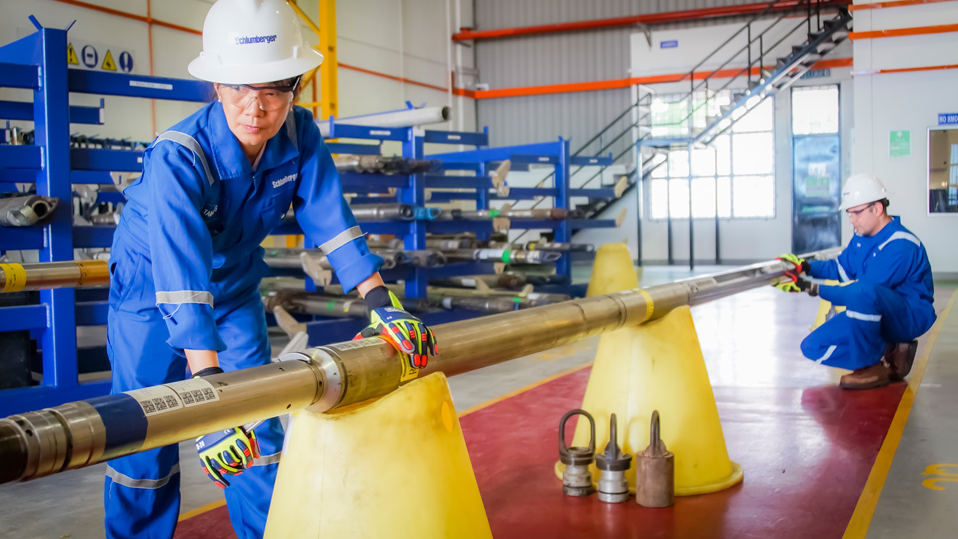
Changing the way we work therefore means adopting a model that ensures we develop people with a combination of skills and proficiency independent of their years of service. Schlumberger is known for best-in-class training and development programs—a unique strength that we have created over more than 40 years. We are now complementing skills development by adopting a rigorous systematic approach with proficiency validation.
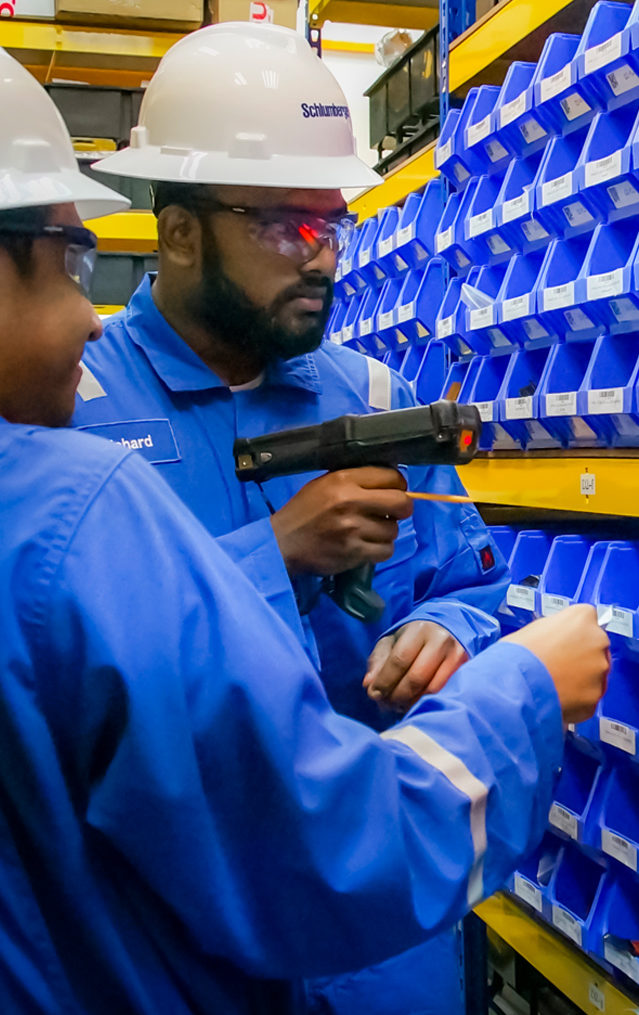
Schlumberger has tens of billions of dollars invested in its global fleet of assets, yet asset utilization levels are low compared with leading companies in other industries. This situation offers an opportunity for change to lower the cost of service. Furthermore, the company’s inventory stands at close to $5 billion. Even a small improvement in the management of a global inventory of this magnitude can have a material impact on financial results.
Recognizing that our global inventory is far from optimum, we began by looking at improving its management. Raising responsibility for demand planning above the level of the operating location and consolidating the number of physical stores brought management under the ownership of new regional distribution centers. This reorganization enabled the reduction of overall stock levels by aggregating demand while reducing slow-moving parts and obsolescence through better sharing and minimized lead time.
In a similar manner, changing asset utilization from a decentralized model to a hub-and-spoke model, where resourcing decisions are consolidated at the regional level, offers the same advantage in reducing asset numbers. Since August 2013, the Wireline product line has been piloting this approach at Port Klang, Malaysia. In the first few months of operation, asset utilization has already increased significantly.

The advantages of hub-and-spoke resourcing for inventory and assets have a parallel in workforce assignment efficiency for varying activity levels. Transformation opportunities exist through the concepts of multiskilling, crew modularity, and remote operations, while support workforce efficiency can be maximized through centralized hubs covering a wider area.
Multiskilling assigns responsibilities across operations more effectively by looking at the various roles performed by all Schlumberger crew at the wellsite. It is particularly effective in removing barriers between product lines and optimizing the overall crew size at wellsites where multiple product lines are deployed. The expertise of crew members who are trained and ready to fill different roles for different product lines is leveraged within an integrated operation. Crew modularity deploys wellsite crews in specialized units—such as rig-up or rig-down—in land locations where high-volume operations are conducted. Moving modular crews from job to job significantly increases both productivity and consistency.
Remote operations use information technology (IT) realtime solutions to connect the crew at the rig to the expertise and support available at the base. This concept has existed for almost a decade, but wider applications are now being pursued as IT and operational challenges are overcome. Not only does the remote operations concept reduce wellsite crew size for greater efficiency, it also has a proven impact on operational reliability through more effective sharing of knowledge and expertise across multiple operations—all in real time.
Each of these three concepts can be applied individually to reduce the total number of people required to cover a specific job. This has a positive impact on operating efficiency for Schlumberger and also addresses concerns of customers who need to reduce the number of personnel for overall health, safety, and environmental reasons at the wellsite, or to limit their number on operations in restricted areas or on small platforms.
Changing the way we work through improving reliability and increasing efficiency is an integral part of our unmatched executional capability—another unique Schlumberger advantage. For more than 15 years we have spent significant time and resources in perfecting the structure of our GeoMarket regions and Product Groups as the platform for continuously improving operating performance. Our unmatched flexibility in product-line management and service deployment is neither easy to deploy nor simple to manage without this structural platform in combination with our long-term experience across industry markets and environments.